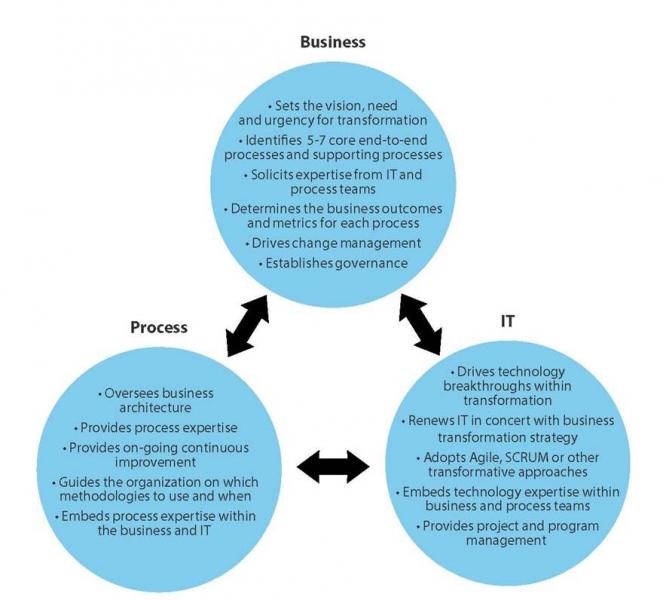The Business/Process/IT Partnership (Your Secret Ingredient For Process Transformation Success)
Over the past 20 years, I’ve been involved in many process initiatives, working closely with business and IT execs. And I’ve seen some efforts work while others go south. But it’s only this year that I so clearly understood why some organizations zoom ahead in process transformation while others stumble, go in circles, or abandon the chase. My own big “ah-ha” moment came at a big business process excellence event in 2012, when I looked across an audience of 500-600 process practitioners and realized there were very, very few CIOs, IT leaders, or even technologists in attendance. Then I remembered some past technology events when my references to process technologies, techniques, or methodologies drew blank stares. Why was that? It was because few process experts were in the room! That made me start wondering — what’s wrong with this picture?
More and more senior execs are embarking on business process transformation. These new changes are catalyzed by many things: new business models made imperative by a new market leader, new threats or opportunities because of rapid changes in technology, a much more customer-centric business strategy, aggressive global expansion plans, or something else. As a result, many organizations are working to become process-driven by 2020.
But . . . successful business process transformation requires an unprecedented level of collaboration among business owners, process teams, and IT, three groups not accustomed to working together. IT usually limits participation to technical topics or doesn't get involved. Process teams lean toward continuous improvement and can be technology phobic. And the business functions? While a small number of visionary execs seek transformation, most are content with incremental improvement that does not lead to transformation while others don’t know how to get started. These organizations may get their initiatives off the ground, but they usually have a weak partnership across the business functions, process teams, and IT, like the one depicted here:
Weak Business/Process/IT Transformation Partnership

In contrast, here’s an example of a strong partnership that has been forged across these three essential groups:
Strong Business/Process/IT Transformation Partnership

For business process transformation programs to succeed, the organization will need a strong (and most likely, a radically new) partnership among all three participants. The good news is that business-oriented CIOs can and will play a crucial role in process initiatives. And there are a growing number of examples in which business, process, and IT leaders are getting together to form multidisciplinary business process management teams.